.jpg)
While a great deal of international and media focus has been placed on Israel's military conflicts, the country quietly has become an energetic, ambitious incubator of entrepreneurialism and invention. What follows is a timeline chronicling some of the most important and interesting innovations produced by Israelis during their country's 65-year existence.
RUMMIKUB (1940s): Ephraim Hertzano invents the smash hit board game Rummikub, which goes on to become the best-selling game in the United States in 1977.
UZI MACHINE GUN (1948): Major Uzi Gal develops the Uzi submachine gun. Gaf builds in numerous mechanical innovations resulting in a shorter, more wieldy automatic. It is estimated that more than 10 million have been built; the Uzi has seen action in numerous wars and in countries throughout the world.
SUPER CUKE (1950s): Esra Galun's research into hybrid seeds leads to his creation of the world's first commercial hybrid cucumber. Their descendants and the techniques Galun pioneered account for the majority of cucumbers cultivated today. Galun went on to develop early-blooming melons and disease-resistant potatoes. His work continues to inform and influence crop genetics.
CANCER SCREENER (1954): Weizmann Institute pioneer Ephraim Frei begins groundbreaking research on the effect of magnetism on human tissue. His work will lead directly to the development of the T-Scan system for the detection of breast cancer, which the U.S. Food and Drug Administration described as a "significant … breakthrough."
EARLY COMPUTER (1955): The Weizmann Institute's WEIZAC computer performs its first calculation. With an initial memory of 1,024 words stored on a magnetic drum, it is one of the first large-scale stored program computers in the world. In 2006, the Institute of Electrical and Electronics Engineers recognizes WEIZAC as a milestone achievement in the fields of computers and electrical engineering.
SOLAR ENERGY BENCHMARK (1955): Harry Zvi Tabor develops a new solar energy system that today powers 95 percent of Israeli solar water heaters and is the standard for solar water heating around the world.
AMNIOCENTESIS (1956): Weizmann professor Leo Sachs becomes the first to examine cells drawn from amniotic fluid to diagnose potential genetic abnormalities or prenatal infections in developing fetuses. His work becomes known as amniocentesis, a routine procedure now conducted on pregnant women worldwide.
LAB-BRED BLOOD CELLS (1963): Sachs becomes the first researcher to grow normal human blood cells in a laboratory dish. This breakthrough leads to the development of a therapy that increases the production of crucial white blood cells in cancer patients undergoing chemotherapy.
DRIP IRRIGATION (1965): Founding of Netafim, developer and distributor of modern drip irrigation.
COLOR HOLOGRAM (1966): Asher Friesem produces the world's first color hologram. He goes on to explore 3-D imaging through work that leads to the development of "heads up" displays for pilots, doctors and other virtual reality systems.
DESALINATION (1967): Sydney Loeb takes a position at Ben-Gurion University, where he will develop the reverse osmosis desalination process, now the worldwide standard.
ADVANCED CELLULAR RESEARCH (1970): Ada Yonath establishes the only protein crystallography laboratory in Israel. She begins a course of research on the structure and function of the ribosome, the sub-cellular component that produces protein, which in turn controls all chemistry within organisms. Her work lays a foundation for the emergence of so-called "rational drug design," which produces treatments for several types of leukemia, glaucoma and HIV, as well as antipsychotic and antidepressant drugs. Along with two colleagues, Yonath is awarded the 2009 Nobel Prize in Chemistry.
BLOOD DETOXIFICATION (1972): Meir Wilchek demonstrates that "affinity chromatography" -- a method he developed for separating biological or biochemical materials -- can be used to detoxify human blood. The work leads to the development of present-day technologies, employed around the world, that are used to remove poison from a patient's blood.
DRONE AIRCRAFT (1973): Israeli fighter jets sustain serious damage during the Yom Kippur War. In response, Israel initiates the development of the first modern Unmanned Aerial Vehicles - also known as UAVs or drones. The new Israeli drones are lighter, smaller and cheaper than any of their predecessors, with capacities such as real-time 360-degree video imaging, radar decoy capability and increased operating ceilings. Drones enable Israel to eliminate Syria's air defenses at the start of the 1982 war with Lebanon without losing a single pilot. Drones descending today from Israeli designs conduct military, civilian, research and surveillance operations around the world.
COMPUTER PROCESSORS (1974): Computer heavyweight Intel sets up an R&D shop in Israel, leading to the development of the globally ubiquitous 8088 processor and Centrino chip.
COMPUTER SECURITY (1977): Adi Shamir, working with two American colleagues, describes a method of encryption. Now known as RSA, it is the single most important encryption method used worldwide to secure transactions between customers and banks, credit card companies and Internet merchants.
DIGITAL AGE INFORMATION SHARING (1977): Abraham Lempel and Jacob Ziv develop the LZ data compression algorithms. Aside from their trailblazing academic applications, the algorithms become the primary basis of early computer information sharing. Today, LZ algorithms and their derivatives make possible our ability to send many types of photos and images between computers quickly and easily.
FARM-SCALE FOOD STORAGE (1980s): Shlomo Navarro invents a simple yet paradigm-shifting food storage system intended to help farmers in developing food-poor and resource-poor areas to keep their crops from spoiling after harvest. The system evolves into GrainPro Cocoons, water- and air-tight containers used around the world to prevent the damaging effects of spoilage and parasites without the use of pesticides.
LEUKEMIA TREATMENT (1981): Elli Canaani joins the Weizmann Institute. His research into the molecular processes leading to chronic myelogenous leukemia, or CML, will result in the development of Gleevec, a drug now provided to CML patients around the world. The molecular processes discovered by Canaani were subsequently discovered to be at work in other leukemias, as well as certain tumors and lymphomas.
UNDERSTANDING CELLULAR ACTIVITY (1981): Avram Hershko and Aaron Ciechanover -- along with American counterpart Irwin Rose -- begin work that will lead to the discovery of ubiquitin, a molecular "label" that governs the destruction of protein in cells. The discovery produces a dramatic improvement in the understanding of cellular function and the processes that bring about ailments such as cervical cancer and cystic fibrosis. In recognition of their work, the team receives the 2004 Nobel Prize in Chemistry.
A NEW FORM OF MATTER (1982): Israeli scientist Daniel Shechtman discovers Quasicrystals, a "new" form of matter that had been considered not only nonexistent but impossible. Shechtman becomes the object of disdain and ridicule, but his discovery eventually is vindicated and earns him the 2011 Nobel Prize in Chemistry. Applications of Quasicrystals range from the mundane (nonstick cookware) to the arcane (superconductive and superinsulative industrial materials).
COMPUTER "LANGUAGE" (1986): Computer scientist David Harel develops Statecharts, a revolutionary computer language used to describe and design complex systems. Statecharts are used worldwide in areas from aviation to chemistry. Harel's work is also being applied to the analysis of the genetic structures of living creatures with hopes of applying subsequent discoveries to the analysis and treatment of disease, infection and other biological processes.
IMMUNOLOGY ADVANCEMENT (1991): Weizmann Institute professor Yair Reisner announces the creation of mice with fully functioning human immune systems. Described from an immunological perspective as "humans with fur," the mice provide for the first time a real-world arena in which to study human ailments and represent a major step forward in the search for a cure for AIDS, hepatitis A and B, and other infectious diseases.
BABY MONITOR (1991): Haim Shtalryd develops the BabySense crib monitor, which becomes standard child safety equipment in millions of homes worldwide.
OFFICE PRINTER (1993): Rehovot-based Indigo Inc. introduces the E-Print 1000. The device enables small operators to produce printing-press quality documents directly from a computer file, revolutionizing the operations of work environments of all stripes.
COMPUTER SECURITY (1993): Gil Shwed, 25, and two partners establish the computer security firm Check Point. Within two years, Check Point signs provider agreements with HP and Sun Microsystems. The company experiences phenomenal growth, and in 1996 it becomes the leading provider of firewall and security services -- including anti-virus, anti-spam and anti-data-loss security components - to businesses of all sizes around the globe.
MULTIPLE SCLEROSIS TREATMENT (1996): Teva Pharmaceuticals introduces Copaxone, the only non-interferon multiple sclerosis treatment. The world's top-selling MS treatment, Copaxone helps reduce relapses and may moderate the disease's degenerative progression.
INSTANT MESSAGING (1996): Mirabilis launches ICQ, the first Internet-wide instant messaging system. America Online adopts the technology and popularizes the world of online chat.
COMPUTER DICTIONARY (1997): Introduction of the Babylon computer dictionary and translation program. Within three years the system will boast more than 4 million users. Babylon eventually becomes integrated into most user-level Microsoft programs, allowing for seamless cross-language translation of millions of words at the click of a mouse.
"PORTABLE" SLEEP LAB (1997): Itamar Medical Ltd. is founded, and soon brings to market its WatchPAT sleep lab, representing a paradigm shift in the treatment of sleep disorders.
PILLCAM (1998): Given Imaging develops the PillCam, now the global standard for imaging of the small bowel.
FIRST AID (1998): Bernard Bar-Natan makes the first sale of his Emergency Bandage. A giant leap forward in field dressings, it has become standard equipment in both civilian and military first aid kits worldwide.
NANOWIRE (1998): Researchers Uri Sivan, Erez Braun and Yoav Eichen report that they have used DNA to induce silver particles to assemble themselves into a "nanowire," a metallic strand 1,000 times thinner than a human hair. In addition to staking out new ground on the frontier of electrical component miniaturization, the wire actually conducts electricity, marking the first time a self-assembling component has been made to function and laying a path to exponential advances in the field of nanotechnology.
VISION-BASED CAR SAFETY SYSTEMS (1999): Amnan Shashua and Ziv Aviram found MobilEye, a company that provides advanced optical systems to car manufacturers to increase safety and reduce traffic accidents.
FLASH DRIVE (2000): M-Systems introduces the flash drive in the United States. Smaller, faster and more reliable than floppy disks or CD-ROMs, they will go on to replace those technologies worldwide.
ADVANCED UNDERWATER BREATHING TECH (2001): Alon Bodner founds Like-A-Fish, a manufacturer of revolutionary underwater breathing apparatuses that extract oxygen from water.
GROUNDBREAKING SPINAL SURGERY SYSTEM (2001): Mazor Robotics is founded and goes on to introduce its SpineAssist robotic surgical assistant, the most advanced spine surgery robot in use today.
URBAN AIR COMBAT/RESCUE (2002): Rafi Yoeli develops the initial concept for the AirMule urban carrier, combat and rescue vehicle.
TERRORIST DETECTOR (2002): In the wake of renewed terrorist activity against Israel and the United States, Ehud Givon assembles a team of researchers to develop an advanced and foolproof "terrorist detector," resulting in the WeCU security system.
MICRO-COMPUTER (2003): Weitzmann scientist Ehud Shapiro develops the world's smallest DNA computing "machine," a composition of enzymes and DNA molecules capable of performing mathematical calculations.
BREAST TUMOR IMAGING (2003): The FDA approves 3TP, an advanced MRI procedure, for use in the examination of breast tumors. The brainchild of Hadassa Degani, 3TP distinguishes between benign and malignant breast growths without requiring invasive surgery.
ANTI-BACTERIAL FABRICS (2003): Aharon Gedanken becomes involved in the treatment of fabrics to prevent bacterial growth, which eventually will lead him to develop the technology for treating hospital fabrics with an anti-bacterial "coating" that will dramatically reduce hospital infection rates.
CENTRINO COMPUTER CHIP (2004): Intel Israel releases the first generation of Centrino microprocessor. Centrino is Intel's mobile computing cornerstone; it drives millions of laptop computers around the world. Successive generations of Centrino have improved laptops' function, speed, battery life and wireless communication capabilities.
TUMOR IMAGING (2005): Insightec receives FDA approval for the ExAblate® 2000 system, the first to combine MRI imaging with high intensity focused ultrasound to visualize tumors in the body, treat them thermally and monitor a patient's post-treatment recovery in real time, and non-invasively. Thousands of patients around the world have been treated.
LAB-GROWN HUMAN TISSUE (2005): Dr. Shulamit Levenberg publishes the results of her work in the development of human tissue. Working with mouse stem cells, Levenberg and her partner Robert Langer produce the first lab-generated human tissue that is not rejected by its host. Levenberg goes on to use human stem cells to create live, beating human heart tissue and the circulatory components needed to implant it in a human body.
WATER FROM THE AIR (2006): Researcher Etan Bar founds EWA Technologies Ltd. In 2008 he produces a clean, green system that "harvests" water from the humidity in the air. The technology represents a boon not only to residents of water-starved desert areas, but also to farmers and municipalities around the world. Each device has the potential to provide two average American families with their entire year's supply of water without contributing to global warming or pollution.
PARKINSON'S TREATMENT (2006): The FDA approves AZILECT, a breakthrough treatment for Parkinson's disease developed by John Finberg and Moussa Youdim. AZILECT dramatically slows the progression of Parkinson's in newly diagnosed patients, increasing the longevity of body and brain function and improving the quality of life for millions worldwide.
BEE PRESERVATION (2007): Rehovot-based Beeologics is formed. The company is dedicated to the preservation of honeybees, which are under threat from Colony Collapse Disorder and vital to the world's food supply.
AIRPORT SAFETY (2007): Boston's Logan International Airport begins testing of a new runway debris detector developed by XSight Systems. XSight uses video and radar monitors to identify and track runway debris, which has been identified as the cause of several airline accidents, including the 2000 crash of a Concorde jet that killed 113 people. XSight has the potential to save upwards of $14 billion per year and an untold number of lives.
TRAUMA VICTIM STABILIZER (2007): Dr. Omri Lubovsky and his sister, mechanical engineer Michal Peleg-Lubovsky, introduce the LuboCollar, a device designed to stabilize trauma victims while maintaining an open airway. The device replaces the standard procedure of intubating trauma patients before transport, saving an average of five critical minutes between the field and the hospital.
HISTORICAL SOLAR ENERGY PROJECTS (2008): Brightsource Energy Inc. begins formalizing agreements with California power companies to develop the world's two largest solar energy projects.
SEPSIS MONITOR (2008): Tel Aviv's Cheetah Medical introduces the NICOM, a bedside hospital monitor that can detect and determine the treatment for sepsis, which occurs in approximately one in 1,000 U.S. hospital patients annually. Sepsis previously had been treatable only after an invasive exploratory treatment, which itself could result in sepsis. The device goes into immediate use by hundreds of hospitals around the world.
ADVANCED FISH FARM (2008): GFA Advanced Systems Ltd. launches Grow Fish Anywhere, a sustainable, enclosed and self-contained fish farming system that is not dependent on a water source and creates no polluting discharge.
A TWIST ON SOLAR ENERGY (2008): Yossi Fisher co-founds Solaris Synergy, a company that creates solar energy panel arrays that float on water.
TOUGH POTATO (2008): Hebrew University Professor David Levy caps 30 years of research with the development of a powerful strain of potato that can be grown in high heat and irrigated with salt water. He shares his findings -- and discussions of where they might lead -- with scientists from Egypt, Lebanon, Jordan and Morocco.
LUGGAGE LOCATOR (2009): Yossi Naftali founds Naftali Inc. and begins distributing the Easy-To-Pick Luggage Locator, a remote luggage tag that alerts travelers when their luggage has arrived at baggage claim.
ARTIFICIAL HAND (2009): Professor Yosi Shacham-Diamand and a team of Tel Aviv University researchers succeed in wiring a European-designed artificial hand to the arm of a human amputee. In addition to conducting complicated activities including handwriting, the human subject reports being able to feel his fingers. Achieving sensation represents the culmination of Shacham-Diamand's work and a breakthrough in the evolution of artificial limbs.
WATER PURIFICATION (2010): Greeneng Solutions launches the first of its ozone-based water purification systems. Designed for commercial, industrial and domestic applications, Greeneng's product line uses ozone-infused water to eliminate germs on kitchen equipment, household surfaces, swimming pools and more. Purifying with ozone is faster and more effective than the global-standard tap water additive chlorine, and ozone produces none of the harmful side effects of chlorine such as asthma and contaminated runoff.
VISION LOSS TREATMENT (2010): VisionCare Opthalmic Technologies debuts the CentraSight device, a telescopic implant that addresses age-related macular degeneration. CentraSight is the first and only treatment for AMD, a retinal condition that is the most common cause of blindness among "first-world" seniors.
MINIATURE VIDEO CAMERA (2011): Medigus Ltd. develops the world's smallest video camera, measuring 0.99mm. The device provides for new diagnoses and treatments of several gastrointestinal disorders.
HELPING PARAPLEGICS WALK (2011): The FDA approves clinical use of ReWalk, a bionic exoskeleton developed by Argo Technologies that allows paraplegics to stand, walk and climb stairs.
BREAST TUMOR TREATMENT (2011): IceCure Medical launches the IceSense 3, a device that destroys benign breast tumors by infusing them with ice. The procedure is quick, painless, affordable and is conducted on an outpatient basis. Soon after, clinical trials begin to study the efficacy of the treatment on malignant breast tumors.
MISSILE DEFENSE (2011): Iron Dome, a short-range missile defense system developed by Rafael Advanced Defense Systems, shoots down a Grad rocket fired at Israel from Gaza. It marks the first time that a short-range missile has been intercepted, opening up new possibilities for military, civil and border defense in the world's conflict zones.
ENDANGERED SPECIES STEM CELLS (2012): Israeli scientist Inbar Friedrich Ben-Nun leads a team of researchers in producing the first stem cells from endangered rhinos and primates in captivity. The procedure holds the potential to improve the health of dwindling members of numerous endangered species, as well as staving off extinction.
DIABETES TREATMENT (2012): DiaPep277, a vaccine based on the work of Irun Cohen, is shown to significantly improve the condition of Type 1 (juvenile) diabetes in newly diagnosed patients.
HELPING THE BLIND TO "SEE" SOUNDS (2012): Dr. Amir Amedi and his team at Hebrew University demonstrate that sounds created by a Sensory Substitution Device (SSD) activate the visual cortex in the brains of congenitally blind people. MRIs of blind people using the device show that it causes the same brain responses of sighted people. This discovery allows the team to adapt the SSD to allow blind individuals to "see" their surroundings by learning to interpret audio signals visually.
FUTURISTIC FOOD PACKAGING (2012): Israeli computer engineer Daphna Nissenbaum creates a revolutionary, 100 percent biodegradable food packaging material. Her company, Tiva, produces materials for drink pouches, snack bars, yogurt and other foods - all of which provide a minimum of six months of shelf life, will completely decompose in a landfill, and can be composted industrially and domestically.
THE "GOD PARTICLE" (2012): Switzerland's Large Hadron Collider produces the Holy Grail of physics - the Higgs Boson, or "God Particle," a subatomic particle that accounts for the existence of matter and diversity in the universe. A team from Israel's Technion was charged with building and monitoring the collider's elementary particle detectors, without which the discovery of the Higgs Boson would have been impossible.
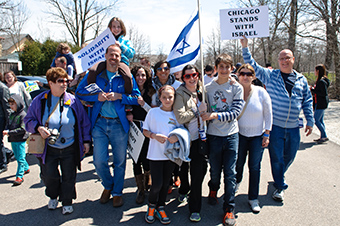

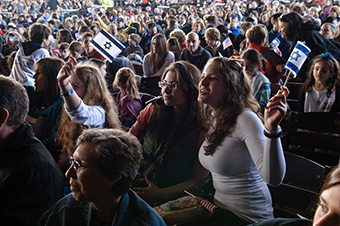
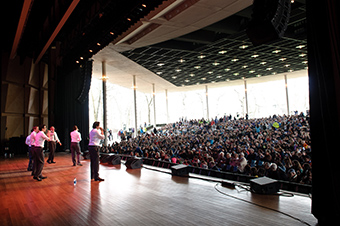
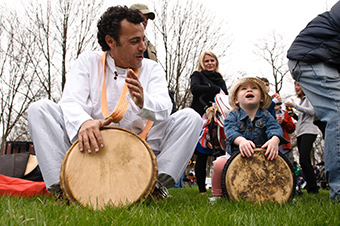
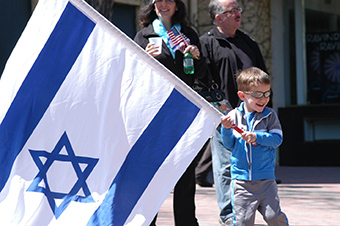



.jpg)
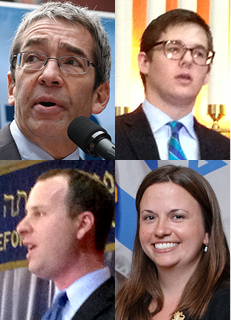

.jpg)



